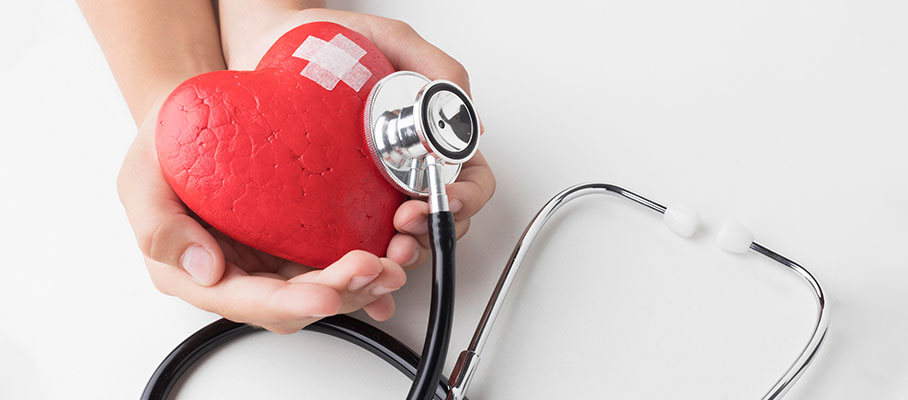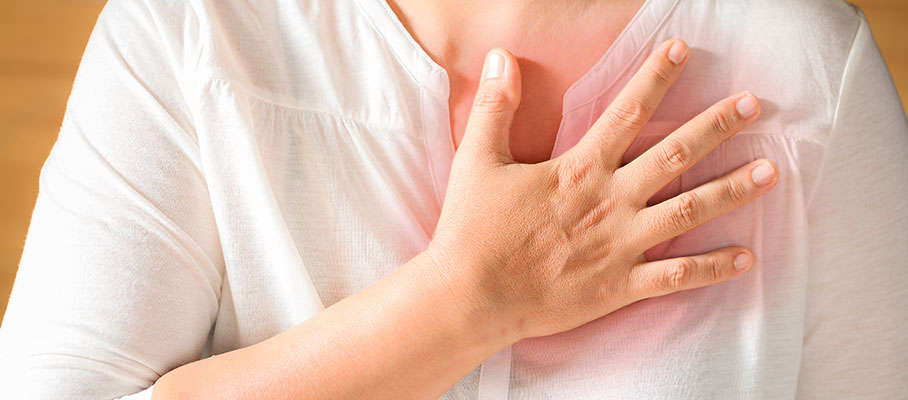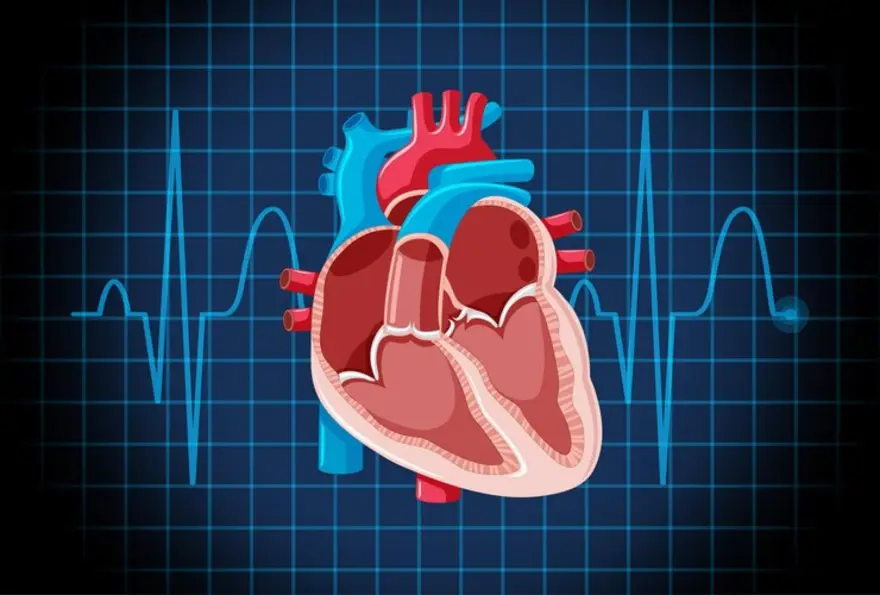heart attack vs cardiac arrest
Cardiac Arrest or Heart Attack: Are They similar?
Many a time, the terms cardiac arrest and heart attack are used interchangeably, but they aren't similar. However, cardiac arrest and heart attack both are life-threatening emergencies and have many similar symptoms and preventions, but they're actually two different heart-related problems with radically different causes and treatments. It could be said that a heart attack is a “circulation” issue and a cardiac arrest is an “electrical” problem. In order to understand the difference between these two conditions, you need to understand what happens in both of these processes. Let’s discuss the differences between a heart attack and a cardiac arrest. What is a heart attack? A heart attack or a myocardial infarction occurs when the blood supply that brings oxygen to the heart muscle is inadequate. It often results from a blockage caused by a clot in the coronary arteries that feed the heart. If the blockage is not resolved quickly, the heart muscle begins to suffer damage or start to die. A troponin test can help detect acute heart injury. Book a test here. What are the symptoms of a heart attack? Not everyone has the same symptoms. Some people show warning signs or symptoms while others show no signs at all. Symptoms of a heart attack that people may report include: Chest pain mostly in the center of the chest Spreading of chest pain to the arms, jaw, neck, back, and abdomen Pain in the upper body Fatigue Feeling lightheaded Sweating Trouble breathing Nausea or vomiting Coughing or wheezing Palpitations What causes a heart attack? Heart attacks are generally caused by coronary heart disease; a condition caused by a buildup of fat and cholesterol in the coronary arteries forming plaques. People with CHD may experience a heart attack if a plaque ruptures and forms a blood clot which in turn blocks the coronary artery. Risk factors like smoking, unhealthy eating habits, diabetes, obesity, high cholesterol, and hypertension may increase your risk of developing coronary heart disease. And consequently, a heart attack. What is a cardiac arrest? A cardiac arrest usually happens suddenly with no warning. It is different from a heart attack. In a cardiac arrest, the heart suddenly stops beating; whereas in a heart attack the heart usually doesn’t stop beating. A cardiac arrest is triggered by an electrical malfunction in the heart that disrupts the heart’s normal rhythm resulting in a rapid and chaotic heartbeat, and in many cases, the heart stops beating altogether. This disrupts the blood and oxygen flow to the vital organs, including the brain and lungs, causing the person to gasp or stop breathing. One may lose consciousness and becomes unresponsive within seconds. Cardiac arrests can be fatal if it’s not resolved within minutes. What are the symptoms of a cardiac arrest? In most cases, there are little-to-no warning signs. More than half of people who experience cardiac arrest have no symptoms. Others may have the following symptoms: Sudden loss of consciousness Blue discoloration of the face No breathing No pulse Chest pain, shortness of breath, dizziness, weakness, heart palpitations, and nausea are few warning signs that may also occur in the period before a cardiac arrest. What causes a cardiac arrest? The potential causes of a cardiac arrest may include: ventricular fibrillation, ventricular tachycardia, coronary heart disease, changes of the heart structure, respiratory arrest, pacemaker failure, choking, drowning, electrocution, hypothermia, sudden drop in blood pressure and excessive alcohol consumption, and drug abuse. A heart attack can also cause cardiac arrest. If a large enough portion of the heart is affected during a heart attack, then the heart may stop beating, leading to a cardiac arrest. What is the connection between a heart attack and a cardiac arrest? These two different heart issues are connected. A cardiac arrest can occur after a heart attack, or while recovery. Heart attacks can escalate the risk for cardiac arrest. It is important to note that the majority of heart attacks do not lead to cardiac arrest. But, most cardiac arrests are caused by heart attacks. Other heart conditions can also disrupt the heart’s rhythm and lead to cardiac arrest. An hs-CRP test (high sensitivity C-reactive protein) along with other tests can help assess a person’s risk for developing heart disease. Book a test here. What actions must be taken in case of a heart attack or cardiac arrest? Call emergency services immediately so that the patient can receive treatment as soon as the services arrive. Emergency services staff are equipped and well trained to revive an unresponsive person whose heart has stopped beating. This can be done either with CPR or with the help of a defibrillator. Using CPR and defibrillators can improve the survival rate of the patient in cardiac arrest. CPR is intended to pump the heart to get blood circulating and deliver oxygen to the organs. The defibrillator sends an electric shock to the heart aiming to restore its normal rhythm. In conclusion, there is a huge difference between a heart attack and a cardiac arrest. Heart attacks are mainly a plumbing problem because it occurs when the blood flow to the heart stops causing a part of the heart muscle to begin to die, whereas cardiac arrest is an electrical problem in which heart suddenly stops beating as a result of rapid and erratic electrical impulses and irregular heart rhythm. There is a long list of symptoms of a heart attack; on the other hand, the main symptoms of a cardiac arrest are lack of consciousness, lack of breathing, and no pulse. There are various causes of a cardiac arrest; while the primary cause of a heart attack is coronary heart disease. If you or a person you’re with is experiencing symptoms that could be either of a heart attack or a sudden cardiac arrest, seek emergency medical attention as they could be life-threatening. Considering that cardiac arrest can be reversed only if treated within minutes, it’s important to act quickly. The longer the person waits to get help, the greater the damage can occur.
Heart Attack: Causes, Symptoms, Prevention and Treatment
A heart attack also called myocardial infarction is a serious medical emergency in which the blood supply that brings oxygen to the heart muscle is severely reduced or cut off and the heart muscle begins to suffer damage or start to die. It often results from a blockage in the coronary arteries that feed the heart. The lack of blood supply can cause lasting damage to the heart muscle and can be life threatening. Heart attack vs cardiac arrest A heart attack is different from cardiac arrest. In the latter, the heart stops working completely and suddenly stops pumping blood around your body. Both are medical emergencies. What causes a heart attack? Coronary heart disease, the leading cause of heart attacks, is a condition in which one or more coronary arteries become narrowed or blocked. The blockage is most often a buildup of fat, cholesterol, calcium, proteins, and inflammatory cells, which form a plaque in the walls of arteries. One of the plaques can rupture, forming a blood clot at the site of the rupture. This blood clot can starve the heart muscle of oxygen by blocking the blood flow through arteries, resulting in a heart attack. Risk factors like smoking, a high-fat diet, diabetes, high cholesterol, hypertension and obesity can increase your risk of developing coronary heart disease. People aged 65 or older usually have a higher risk than young adults to get a heart attack. Make sure to check your health parameters regularly. Book TruHealth Senior Package here. A spasm in your coronary artery is another rare cause of heart attacks. During coronary spasm, your arteries restrict or shut down blood flow to part of the heart muscle. Use of tobacco and stimulants such as cocaine can cause a life-threatening spasm. Symptoms of heart attack Some people who are having a heart attack have warning signs or symptoms while others show no signs at all. Symptoms of a heart attack that many people report include: Chest pain Pain in upper body Feeling lightheaded Sweating Trouble breathing Nausea or vomiting Coughing or wheezing An overwhelming sense of anxiety Sleep disturbances, weakness, extreme shortness of breath, indigestion, body aches or discomfort in the back or upper body, a general feeling of being unwell are some atypical heart attack symptoms in females that can occur with or without chest discomfort. Recognizing these early symptoms and seeking immediate medical attention is crucial to save a person’s life. How can one reduce risk of heart attack? Adopting a healthier lifestyle is the most effective way to prevent having a heart attack. Lifestyle changes you can make to help prevent a heart attack are: Eat a healthy diet Quit smoking Limit alcohol Control your blood pressure Control your cholesterol and triglyceride levels Maintain a healthy weight Manage diabetes Manage stress Get regular exercise Get enough sleep Treatment of heart attack Diagnosis and treatment of heart attack might be complex and different depending on which type of heart blockage you've had. A complete blockage means you've had an ST elevation myocardial infarction (STEMI) and a partial blockage means you've had a non-ST elevation myocardial infarction (NSTEMI).Treatments differ for STEMI versus NSTEMI, although there can be some overlap. If you have a STEMI, the most serious form of heart attack, get immediate medical assessment and treatment. It is important to get prompt treatment, to unblock your coronary arteries restoring blood flow to part of the heart muscle and minimizing the heart muscle damage. Treatment may involve different techniques like use of clot-dissolving drugs (thrombolysis), coronary angioplasty (percutaneous coronary intervention) or a bypass surgery depending on when your symptoms started and how soon you can access the treatment. Coronary angiography is done first to assess your suitability for coronary angioplasty. Coronary angioplasty and stenting: In this procedure, also known as percutaneous coronary intervention (PCI), doctors guide a long, thin tube with a sausage-shape balloon at the end (catheter) through an artery in your groin or arm to a blocked artery in your heart. Once the catheter is in position, the balloon is inflated to open a blocked coronary artery and restore blood flow. A flexible metal mesh stent almost always is inserted into the artery to help keep it open afterwards. You may also be given blood-thinning medicines, such as low-dose aspirin, to prevent further clots from forming. You may need to continue taking these medicines for some time after angioplasty. In some cases, coronary angioplasty may not be technically possible. In such circumstances, coronary artery bypass surgery may be considered as an alternative operation. Coronary artery bypass surgery: It involves taking a healthy blood vessel from another part of your body, usually your chest, arm or leg and sewing it to the coronary artery above and below the narrowed or blocked area, allowing blood flow to the heart to bypass the narrowed section. You'll likely remain hospitalized for several days after blood flow to your heart is restored and your condition is stable. If you have the less serious types of heart attack (NSTEMI), blood-thinning drugs (antiplatelet agents and anticoagulants) are usually recommended to inhibit blood clot formation. The drugs used to break down blood clots, known as thrombolytics or fibrinolytics, are usually given by injection. In some cases, further treatment with angioplasty or bypass surgery may also be recommended in cases of NSTEMI or unstable angina, after initial treatment with various drugs. Be aware but don’t panic Having a heart attack is a frightening experience. A heart attack can be life threatening and requires immediate medical treatment. If anyone has symptoms of a heart attack, access medical care at once. With immediate medical attention, there is often a good chance of a positive outcome.
 Home Visit
Home Visit Upload
Upload
















 WhatsApp
WhatsApp